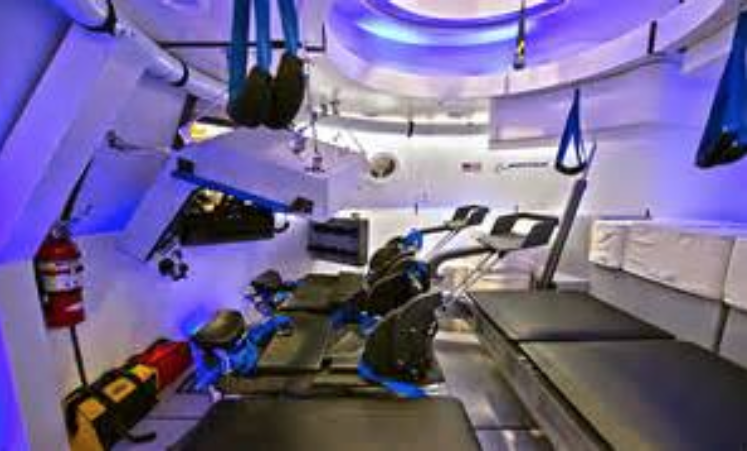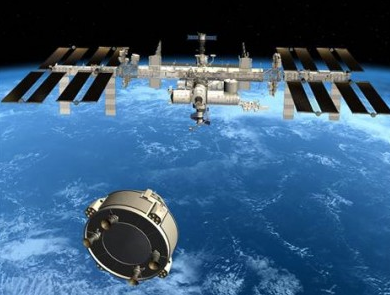
[SatNews] "We are moving into a truly commercial space market and we have to consider our potential customers, beyond NASA, and what they need in a future commercial spacecraft interior."
Boeing [NYSE: BA] and Samsung will collaborate on ways to incorporate the latest mobile technology into Boeing’s new Crew Space Transportation (CST)-100 spacecraft.
Under an agreement announced today at the 30th Space Symposium, Boeing and Samsung will start identifying how mobile technology can be used to improve CST-100 crew and mission operations. The initial results are expected to be outlined later this year.
“Just as they’ve done on Earth, mobile tools and devices will enhance the way we operate in space day-to-day, making mission operations more efficient,” said Chris Ferguson, director of crew and mission system for the Boeing Commercial Crew Program.
“Like any other person doing his or her work, an astronaut values connectivity and the ability to share experiences,” added Ferguson, who piloted the final Space Shuttle mission for NASA in 2011.
 The Boeing CST-100 spacecraft was developed as part of NASA’s Commercial Crew Program. The CST-100 will accommodate up to seven passengers or a mix of crew and cargo to low-Earth orbit destinations.
The Boeing CST-100 spacecraft was developed as part of NASA’s Commercial Crew Program. The CST-100 will accommodate up to seven passengers or a mix of crew and cargo to low-Earth orbit destinations.Featuring an innovative weld-less design and a pressurized vessel that can be reused up to 10 times, the CST-100 capsule features Boeing's LED “Sky Lighting”.
A unit of The Boeing Company, Boeing Defense, Space & Security is involved in defense, space and security businesses specializing in innovative and capabilities-driven customer solutions, and is a manufacturer of military aircraft. Headquartered in St. Louis, Boeing Defense, Space & Security is a $33 billion business with 58,000 employees worldwide.
Boeing recently revealed the interior design for its next-generation CST-100 manned space capsule, and it looks like something straight out of "Star Trek." Designed to take a crew of seven or cargo to destinations like the International Space Station, Boeing's space capsule began life as part of NASA's Commercial Crew Integrated Capability initiative, and is poised to take the CST-100 beyond the confines of governmental applications.
"We are moving into a truly commercial space market and we have to consider our potential customers, beyond NASA, and what they need in a future commercial spacecraft interior," said Chris Ferguson, Boeing's director of Crew and Mission Operations for the Commercial Crew Program.
The futuristic space capsule design, set to launch in 2017, is a natural progression for Boeing's aircraft engineers. Developed in partnership with Bigelow Aerospace, the commercial crew capsule's sleek, modern design is a stark departure from the cluttered switchgear-laden interiors of past spacecraft.
In an attempt to reduce clutter, engineers have abandoned traditional spacecraft switchgear in favor of tablet-based control interfaces. According to The Daily Mail, the capsule's interior will also feature lightweight plastic seats in place of traditional metallic units.
LED lights and large windows will also give the capsule an open feel.
Since NASA's decision to retire the space shuttle fleet in 2011, the U.S. and other nations have had to rely upon Russian Soyuz rockets to transport cargo and crew to the International Space Station. Boeing's production CST-100 will compete with Elon Musk's Space X and Sierra Nevada's Dream Chaser to provide NASA with an alternative to the Soyuz.

